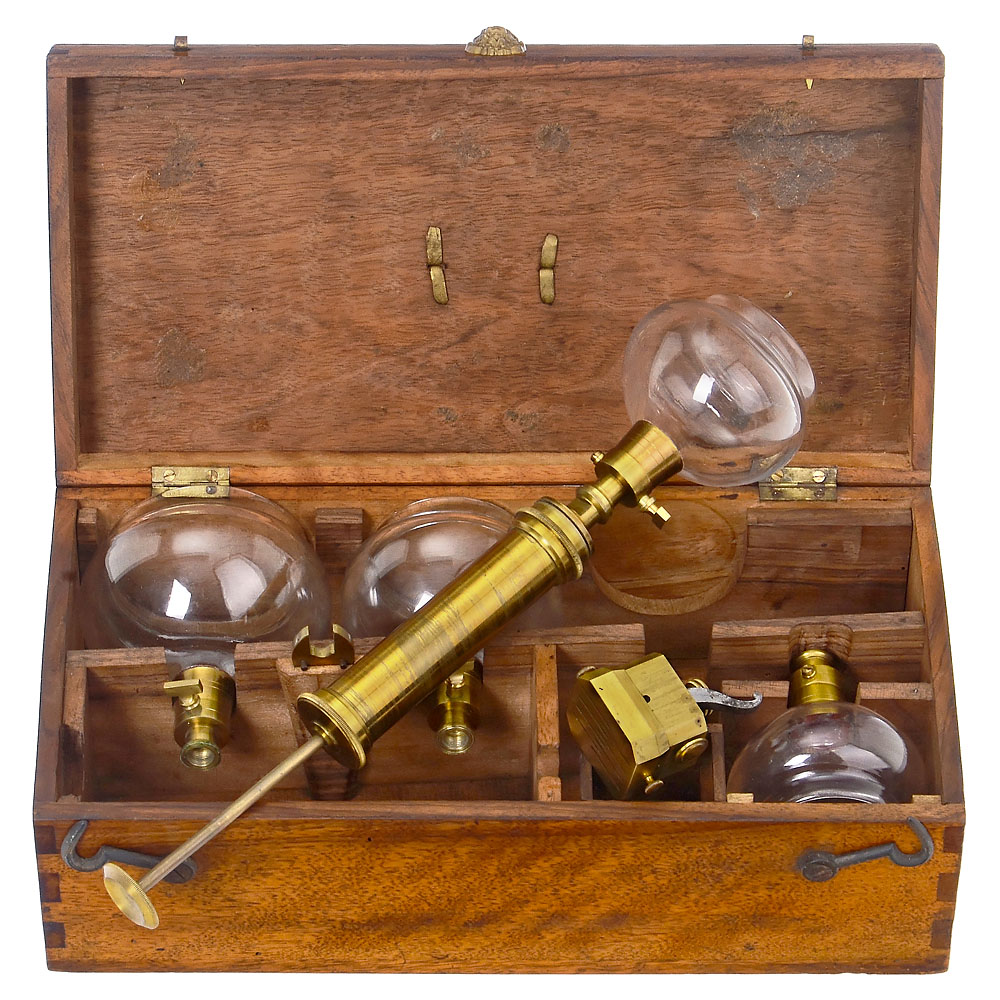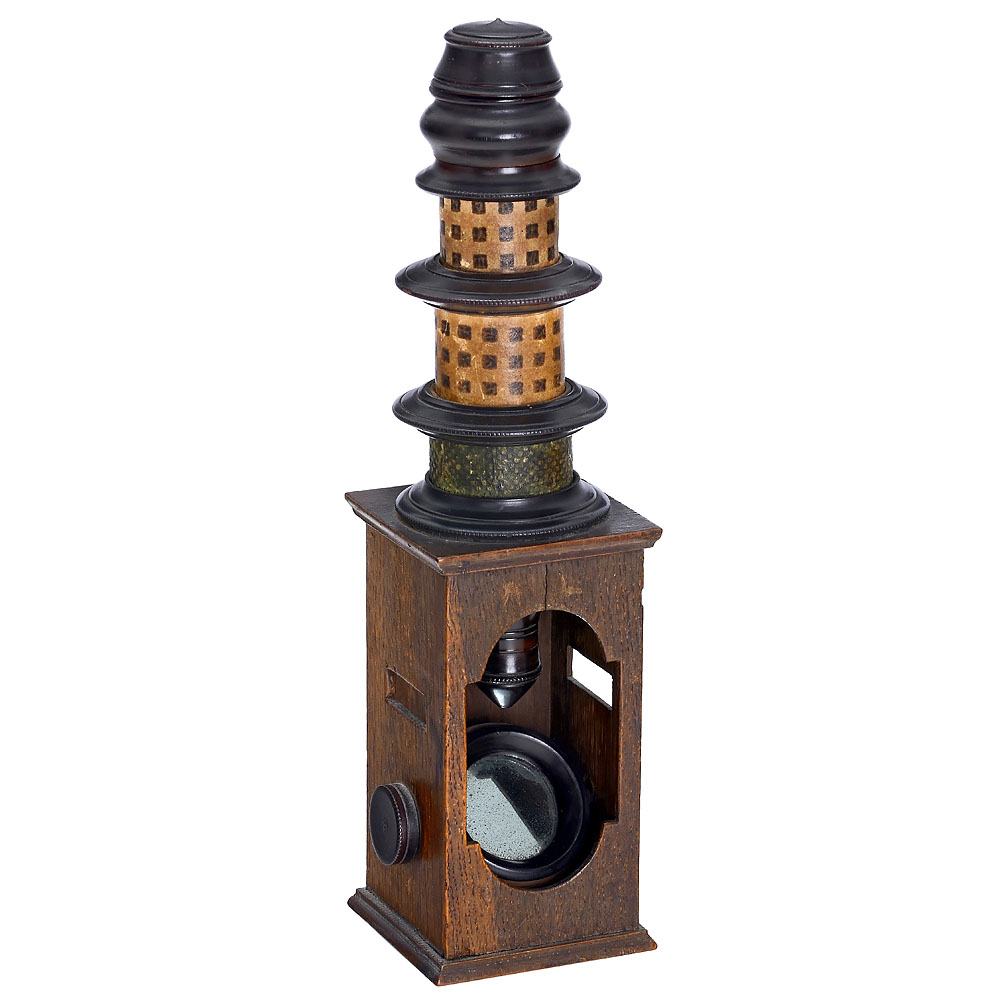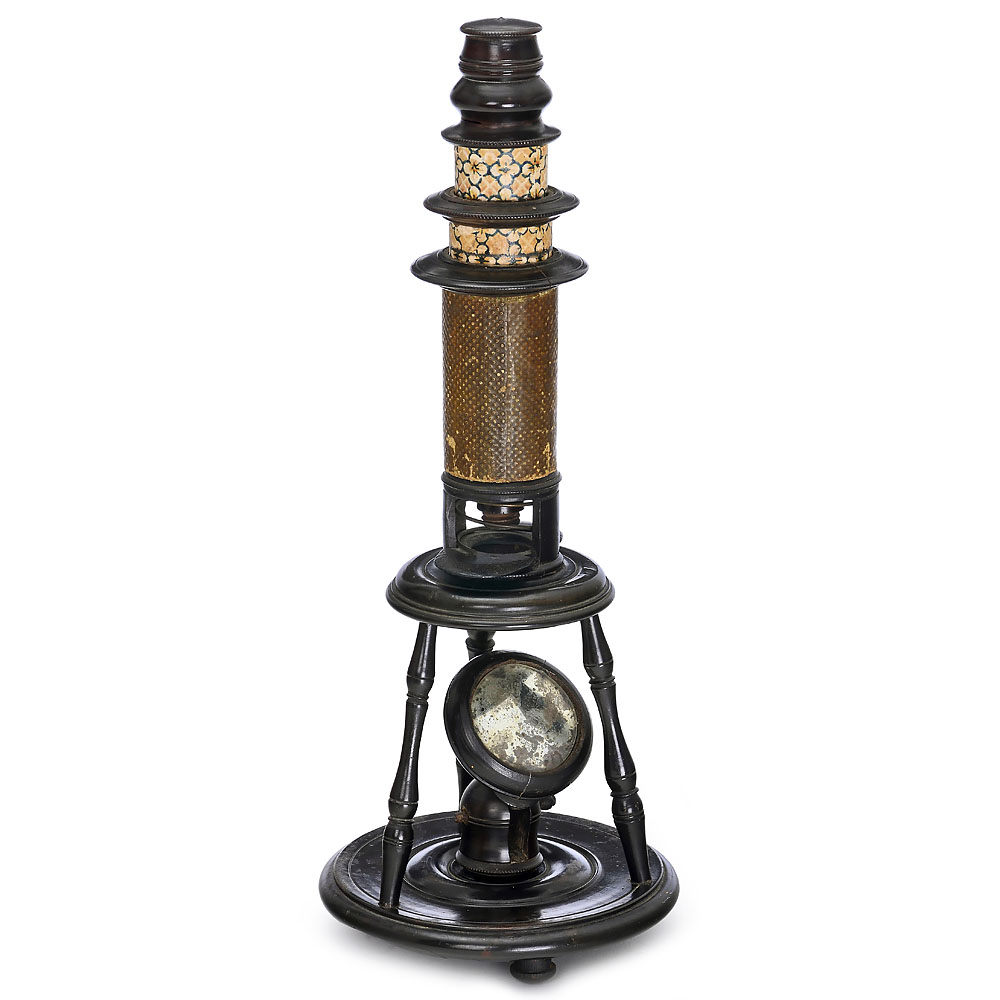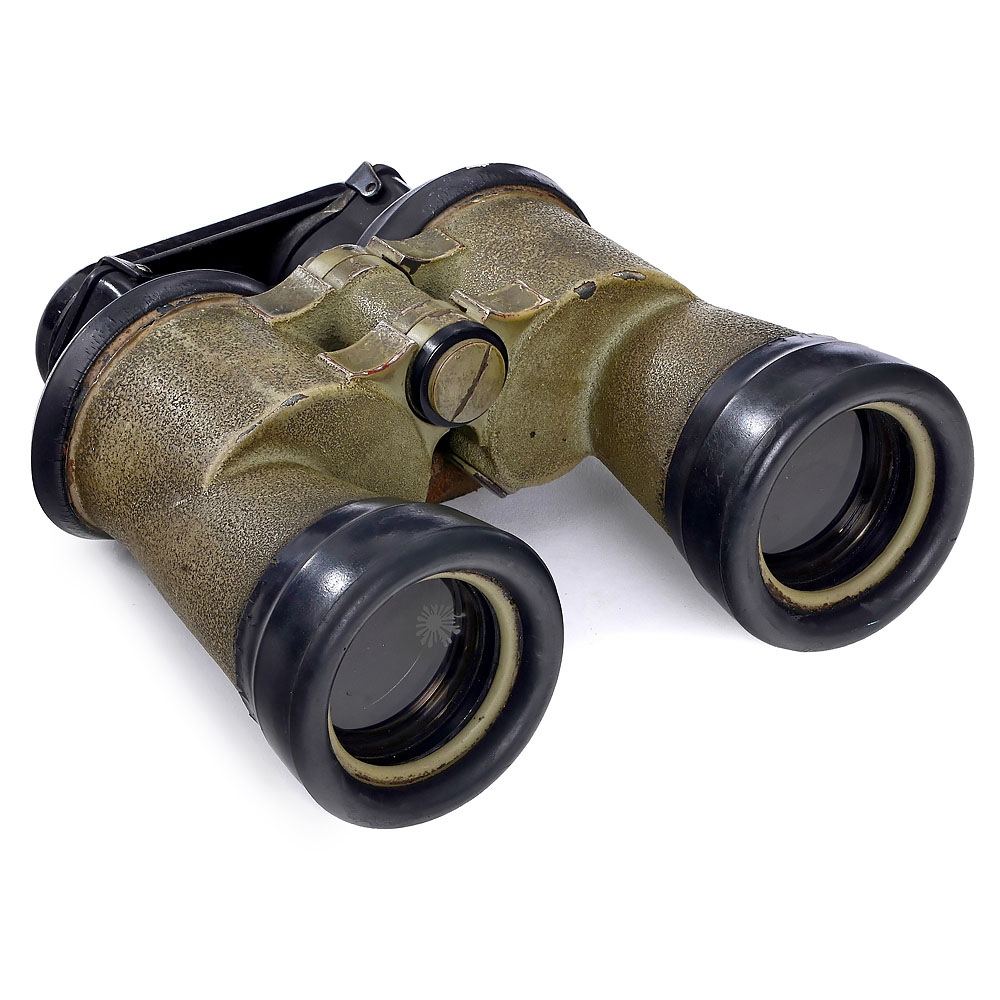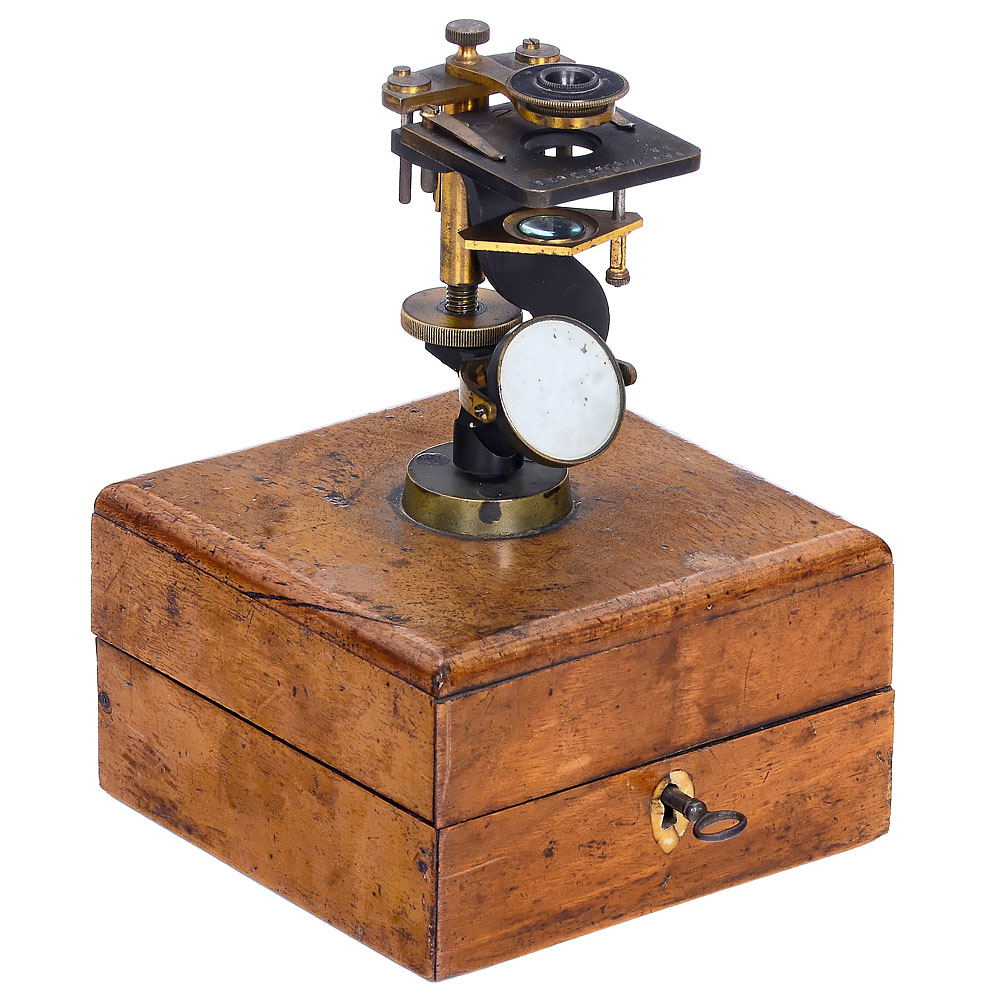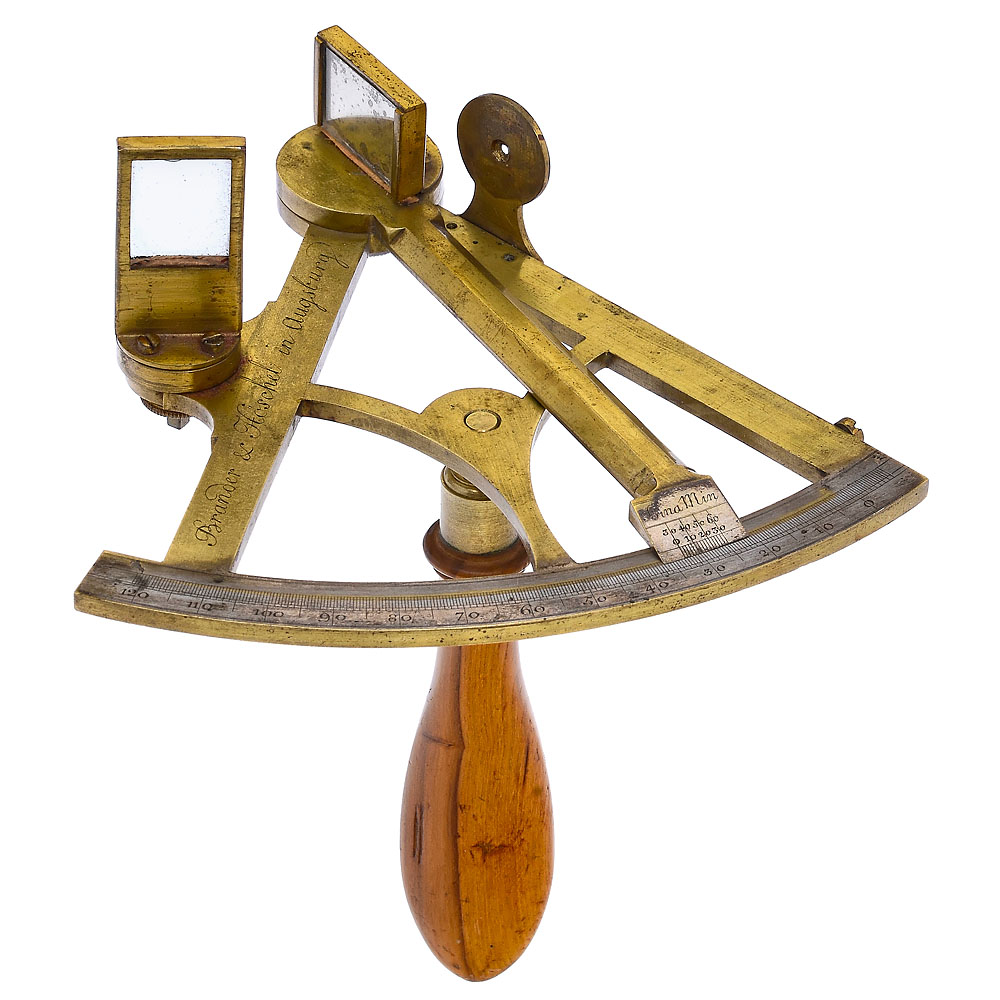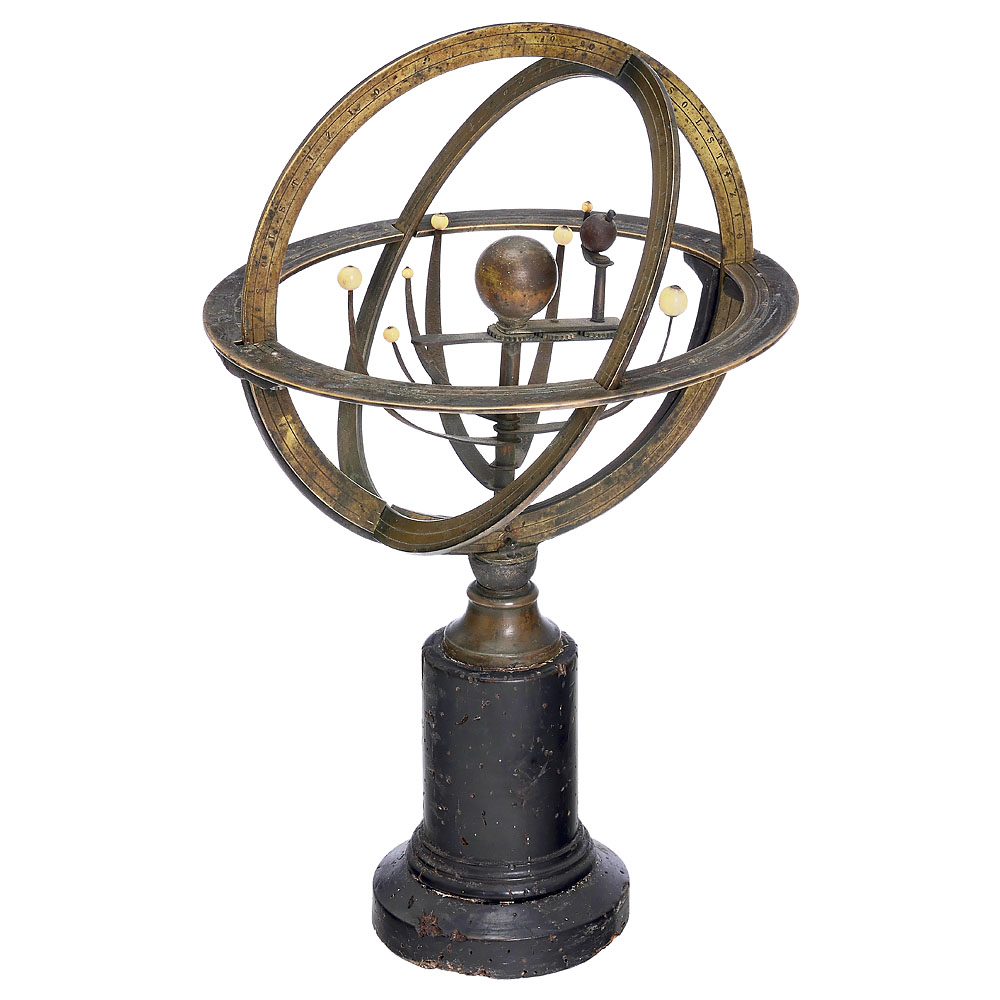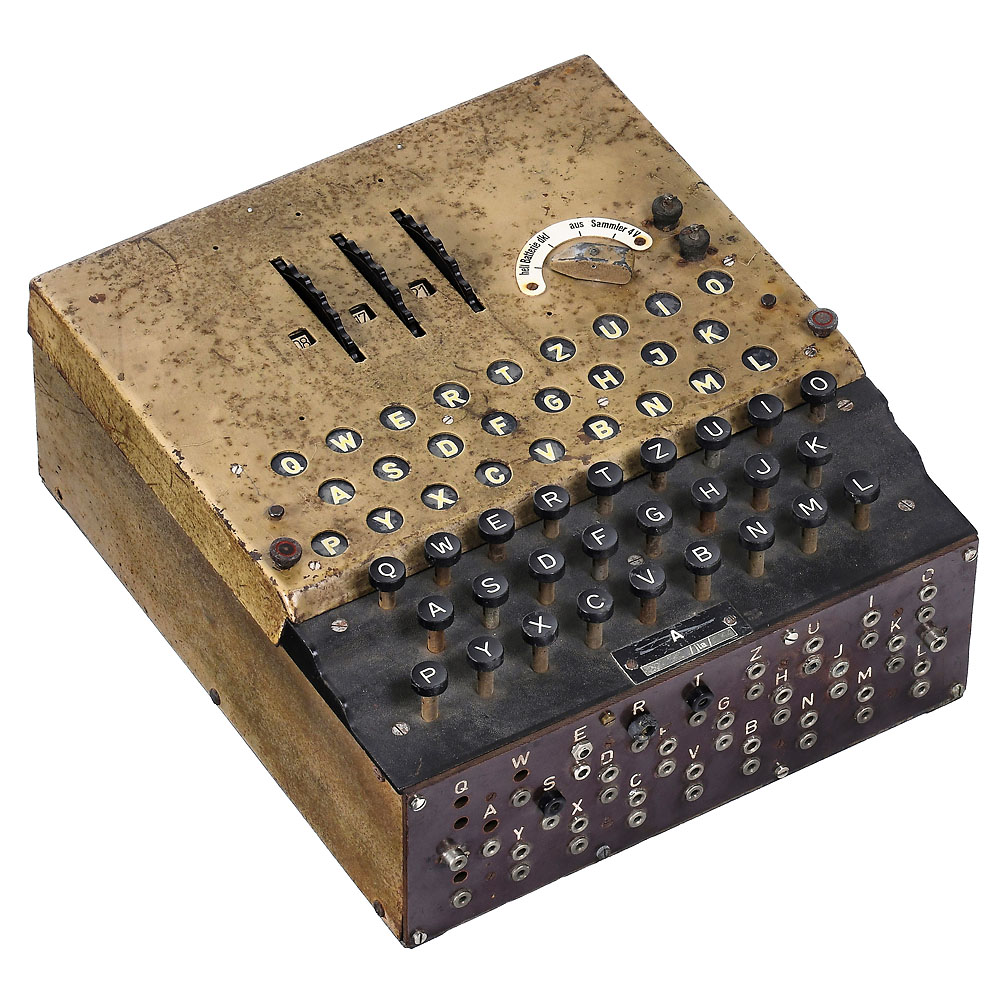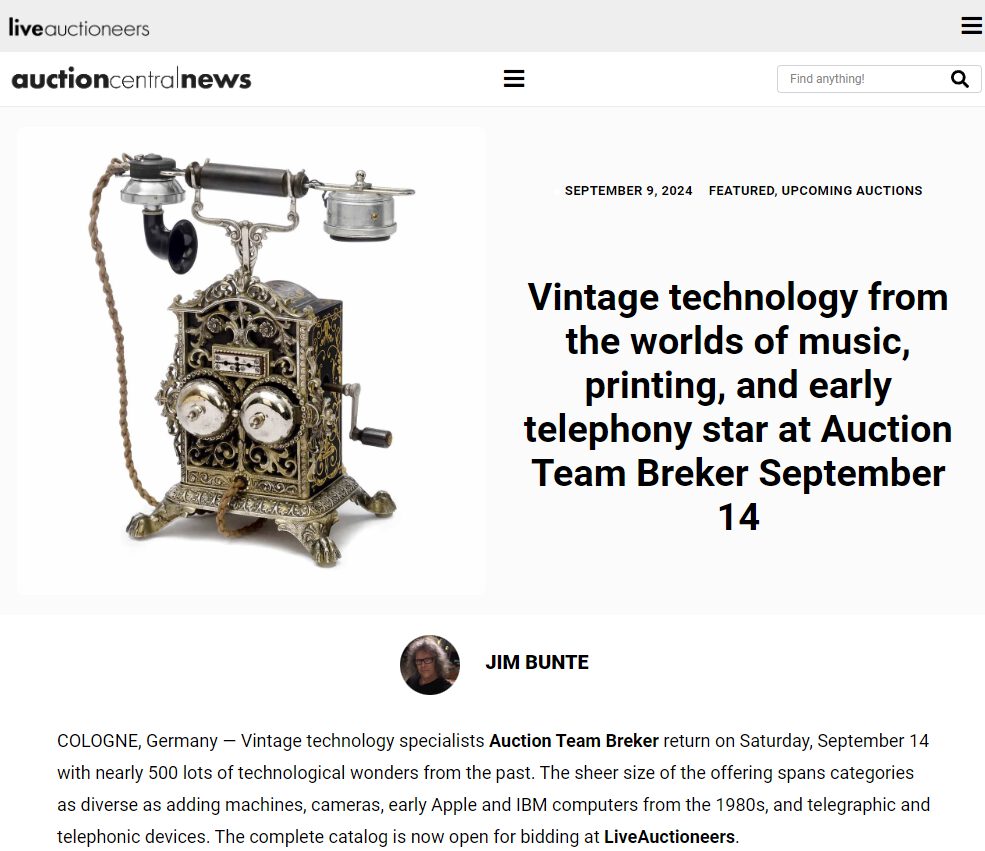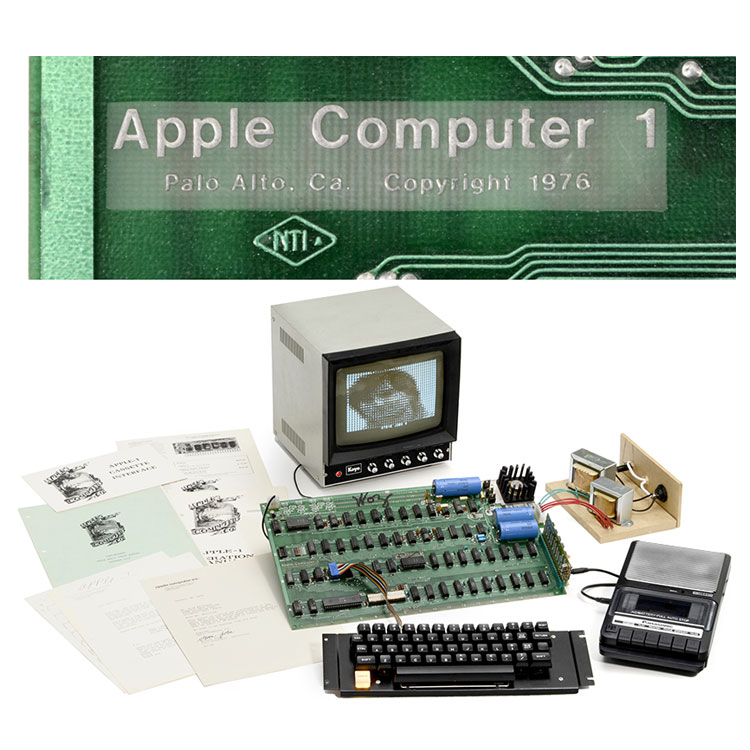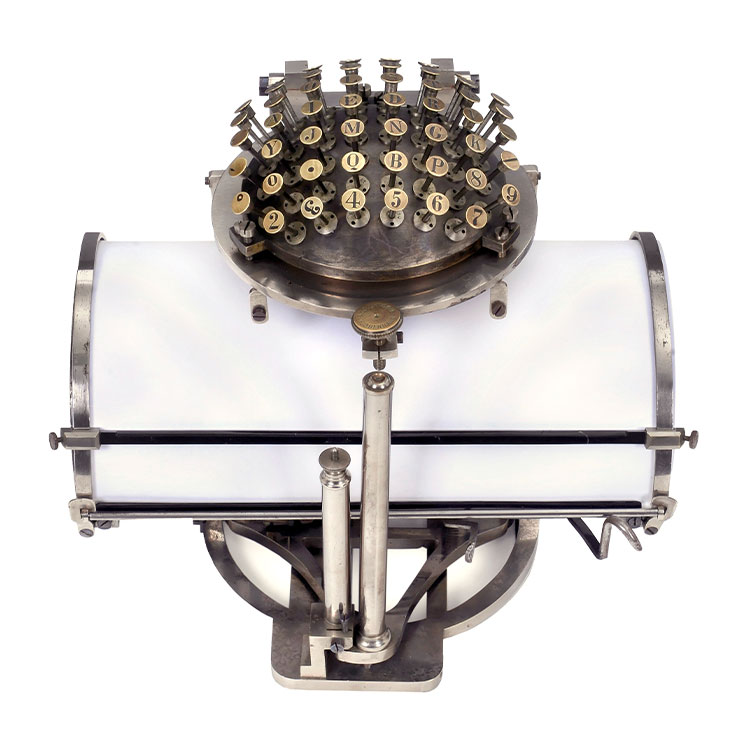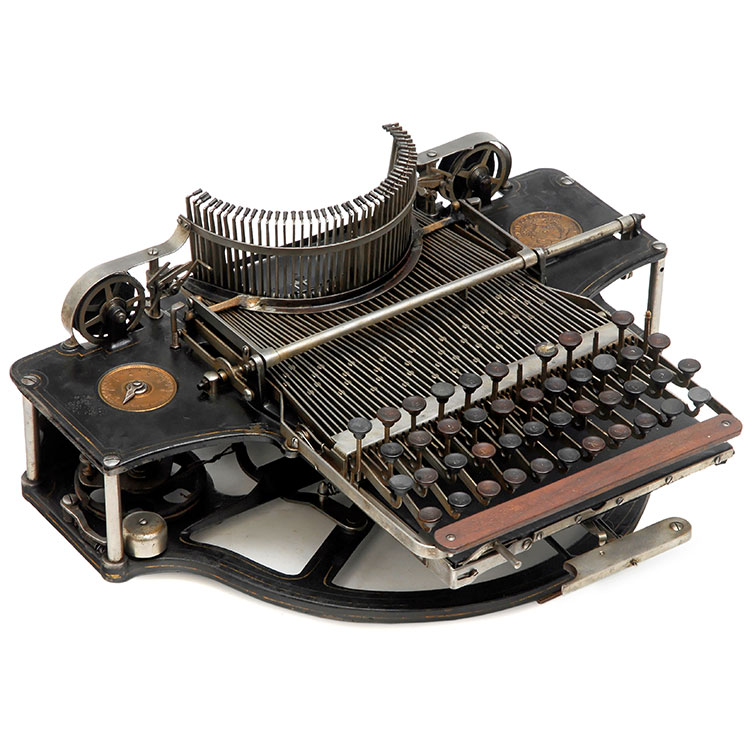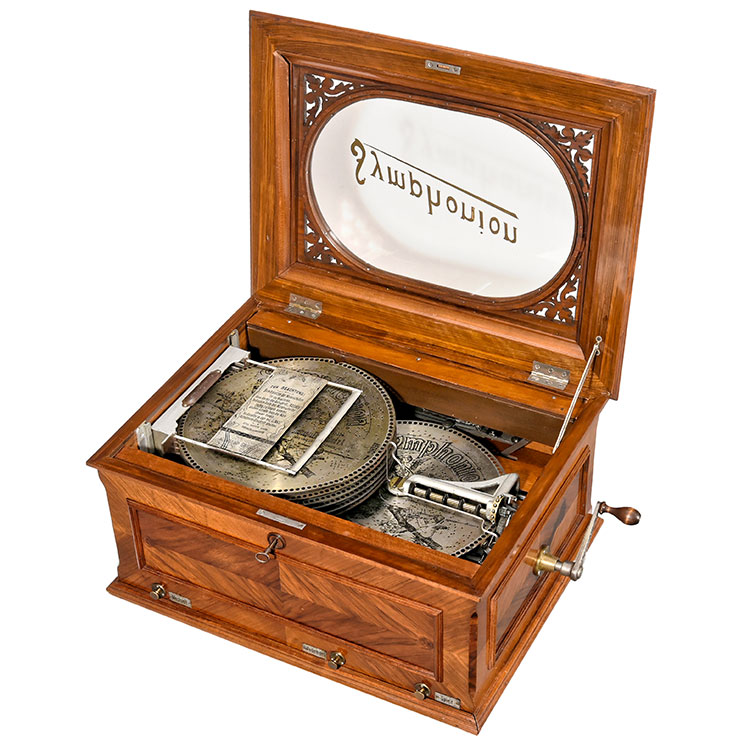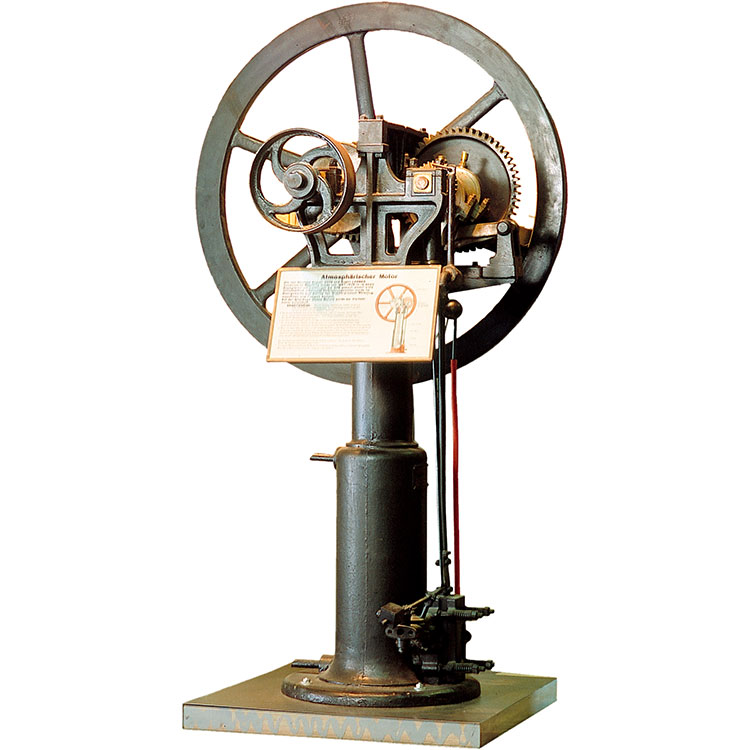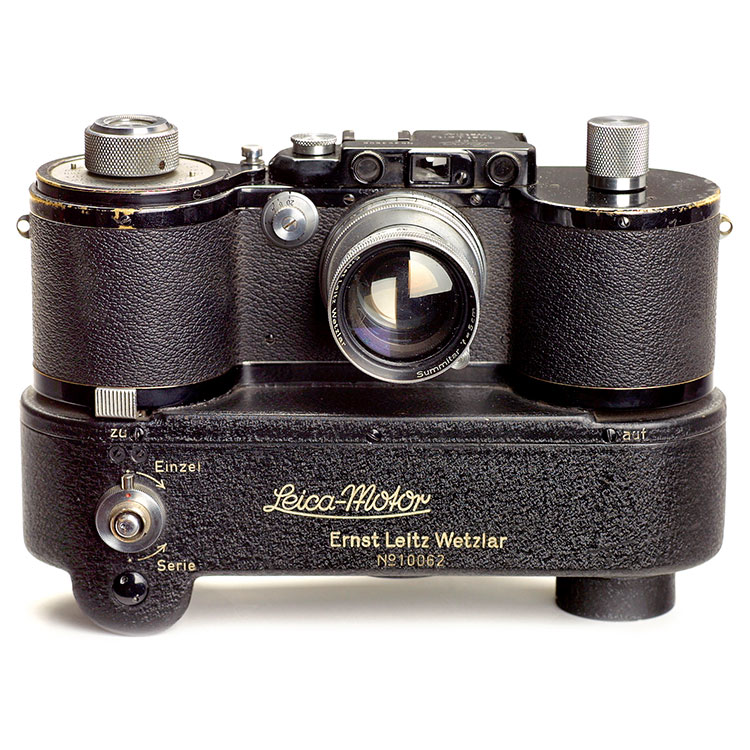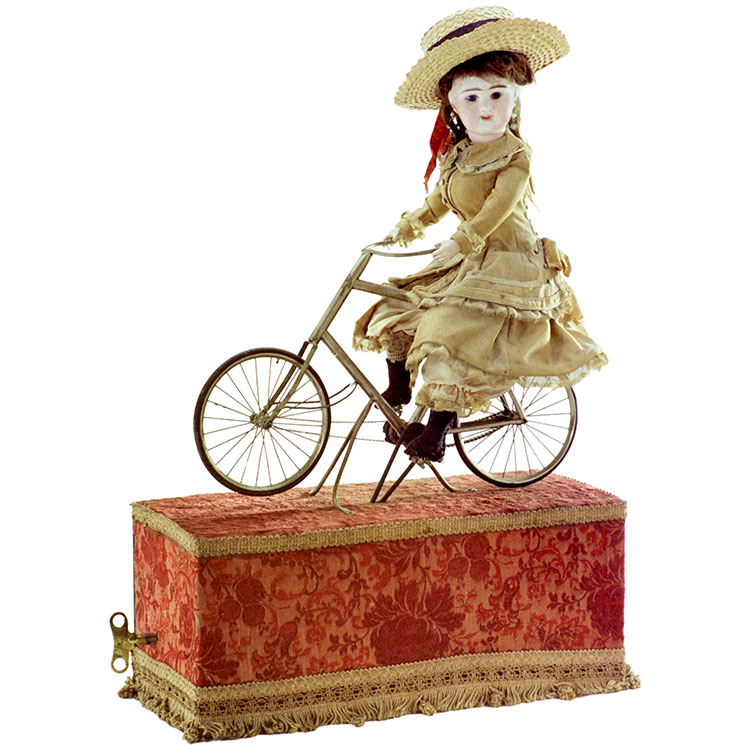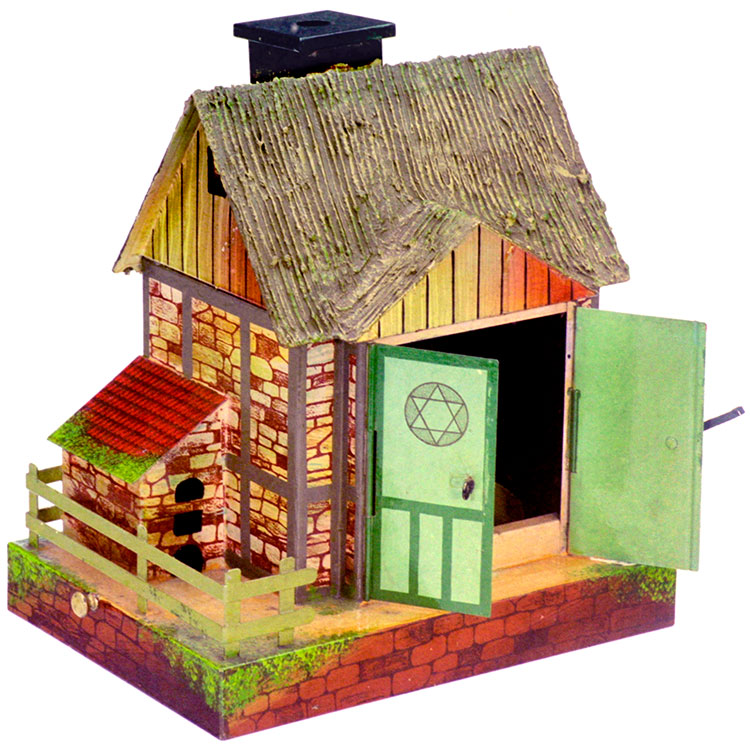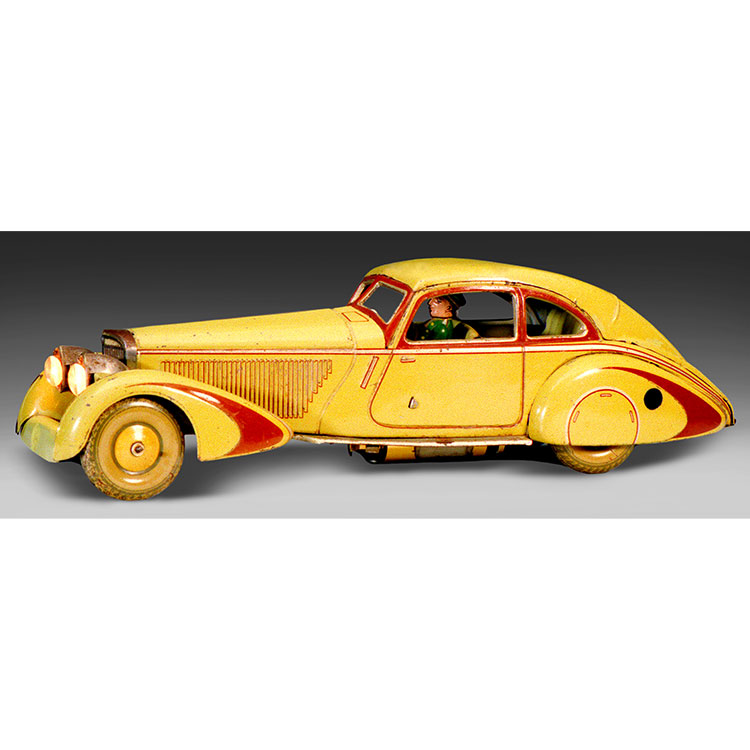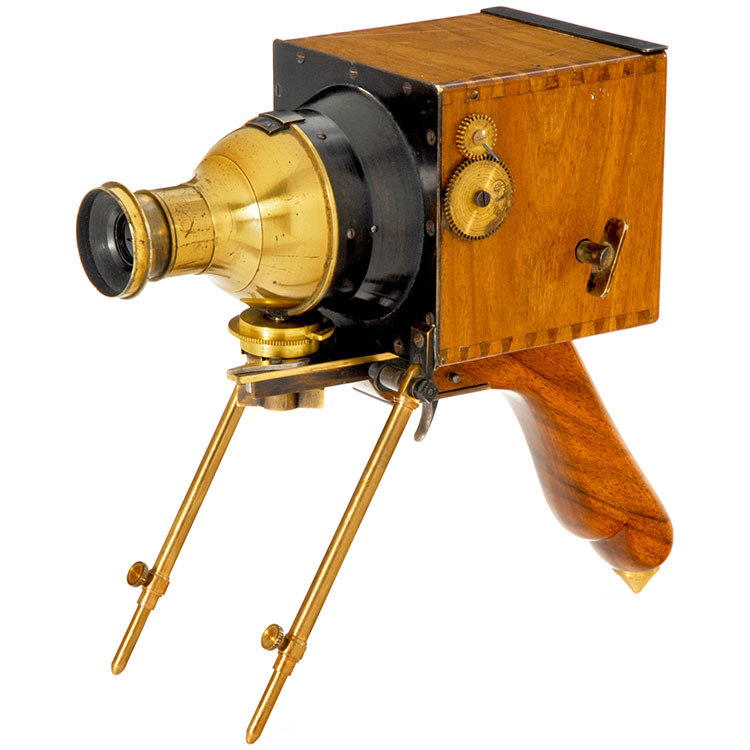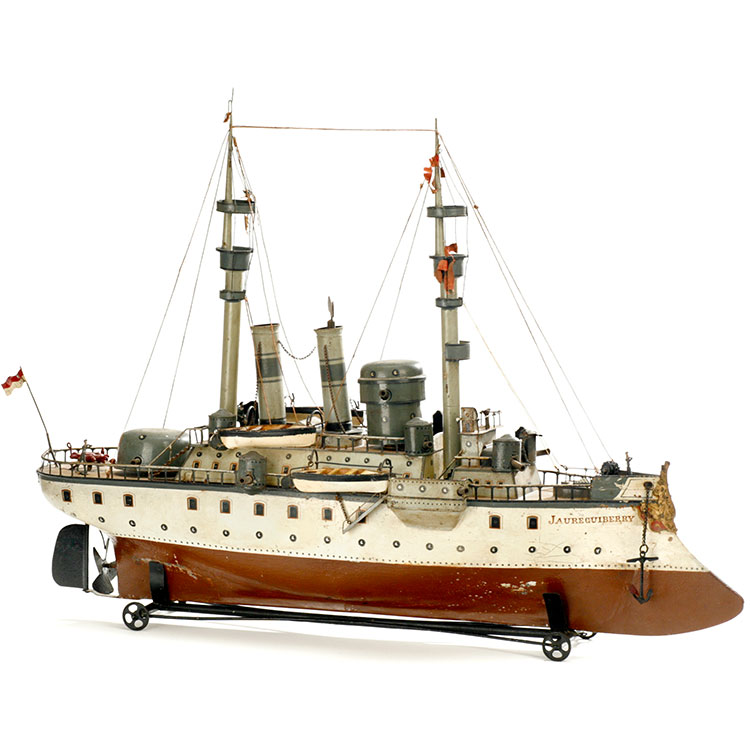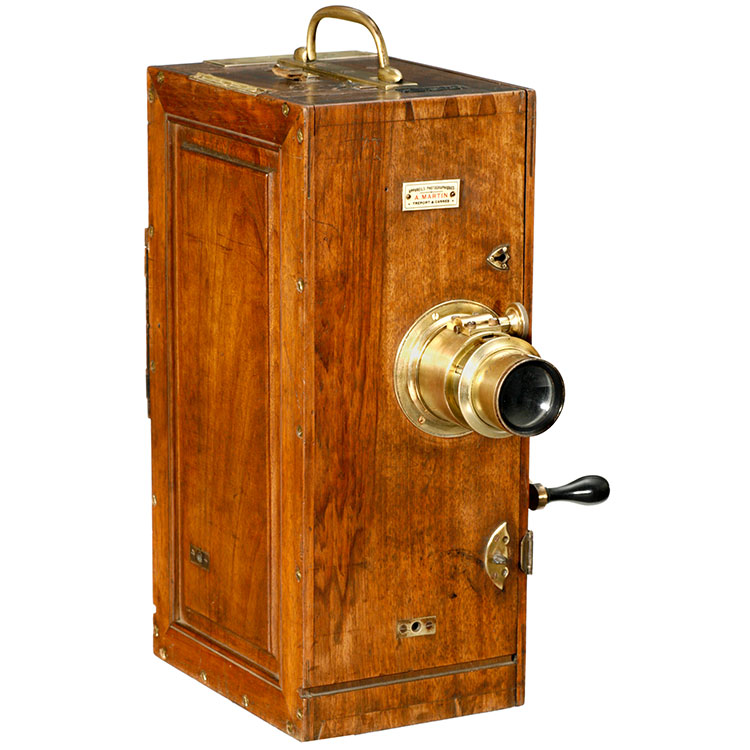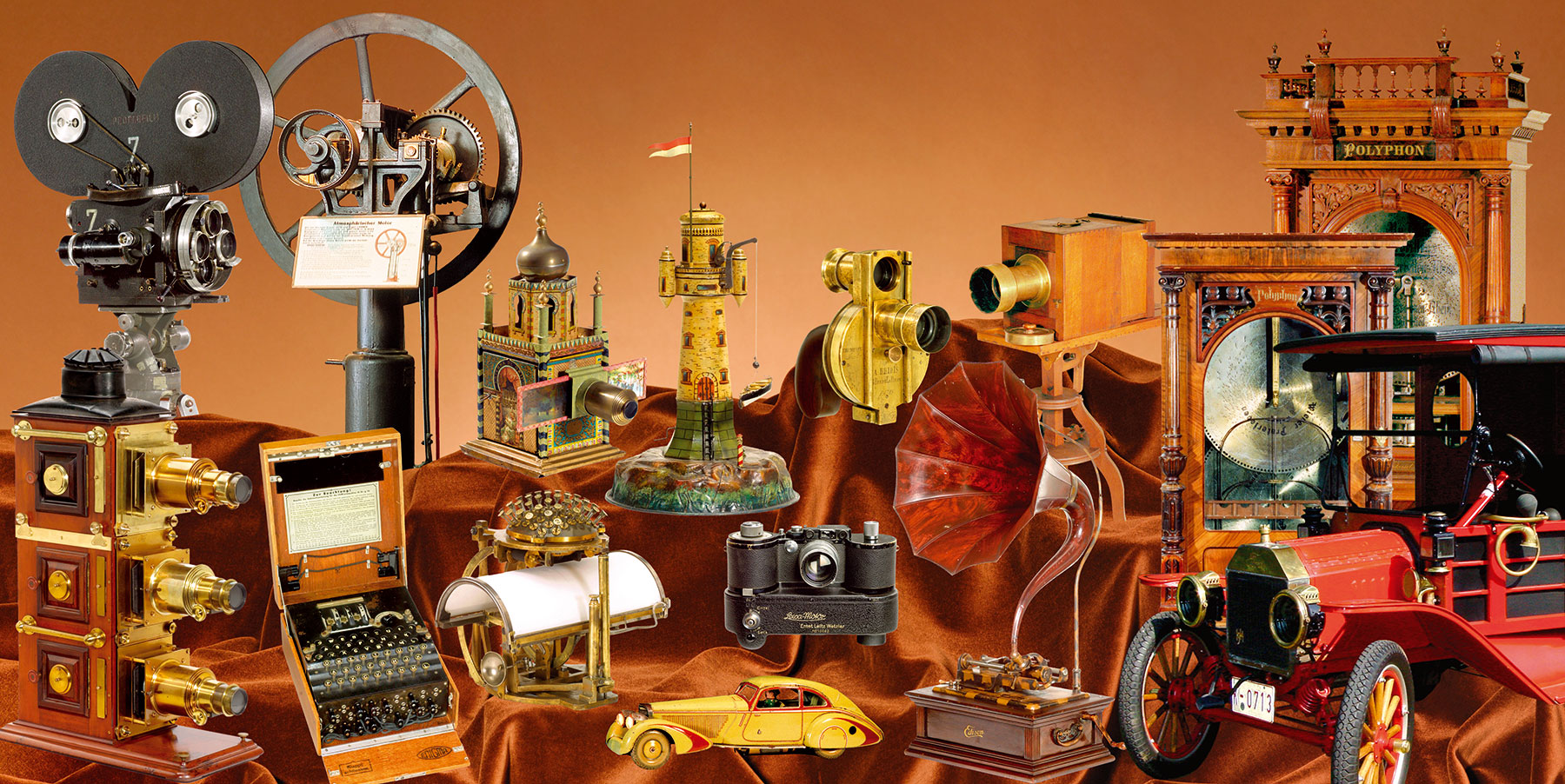
Our Auctions 2026
Next auction: 14 March 2026
14 March 2026
Consignments up to:
7 February
16 May 2026
Consignments up to:
9 April
12 September 2026
Consignments up to:
5 August
7 Nov 2026
Consignments up to:
2 October
Buying
Selling
Conditions
Bid form
Highlights of the next Auction
14 March 2026
Click on Object for more Info & Images
“The Times” features first mechanical calculator,
This month Christie’s will take bids for ‘the most important scientific instrument ever offered at auction’: the first mechanical calculator, made in 1642. Richard Askwith reports on the increasing appreciation – and value – of old office equipment.
“Auction Central News” features former Auction
Vintage technology specialists Auction Team Breker return on Saturday, September 14 with nearly 500 lots of technological wonders from the past.
Since more than 35 Years
Auction Categories
- Office Antiques
- Telephones
- Mechanical Music
- Science & Technology
- Photographica & Film
- Fine Toys & Automata
- Radios
- Fairgrund Attraktions
- Steam Engines
Partner for Live Auctions
Absentee and Live Bids available
Buyer’s Premium: 26,8% + VAT=31,89%
Audio & Video
Absentee and Live Bids available
Buyer’s Premium: 24,8% + VAT=29,51%
Audio & Video
Absentee Bids
available
Buyer’s Premium: 26,8% + VAT=31,89%
Audio & Video
Absentee Bids via email available
Buyer’s Premium: 26,8% + VAT=31,89%
Audio & Video
Top Seller
Here are some results of recent sales:
Ericsson Telephone for the Royal Castle in Oslo, ca. 1880
Verkauft/Sold: Nov. 06, 2021: 77.000 € / 89.310 $
Automatic Disc-Change Symphonion Model 120S, ca. 1900
Verkauft/Sold: May 20, 2017: 55.335 € / 61.420 $
“Lune Fin de Siècle” Musical Smoking Automaton by Gustave Vichy, Paris, c.a 1891
Verkauft/Sold: Nov. 07, 2015: 135.000 € / 147.440 $
Musik-Automat “La Bicycliste” von Leopold Lambert, Paris, ca. 1890
Verkauft/Sold: May 27, 2000: 25.806 € / 23.700 $
Hexenhäuschen “Gingerbread House” Märklin No. 8880, 1909
Verkauft/Sold: May 29, 2010: 44.270 € / 54.450 $
Musik-Automat “Der Perlenfischer” von Henry Vichy, ca. 1895
Verkauft/Sold: Nov. 20, 2010: 40.580 € / 55.600 $
Henry Vichy-Trompeter-Automat mit Lioret-Phonograph, ca. 1895
Verkauft/Sold: Nov. 20, 2010: 44.270 € / 60.650 $
Arithmomètre de Thomas de Colmar (Boulle), ca. 1835
Verkauft/Sold: Nov. 16, 2013: 233.600 € / 315.410 $





